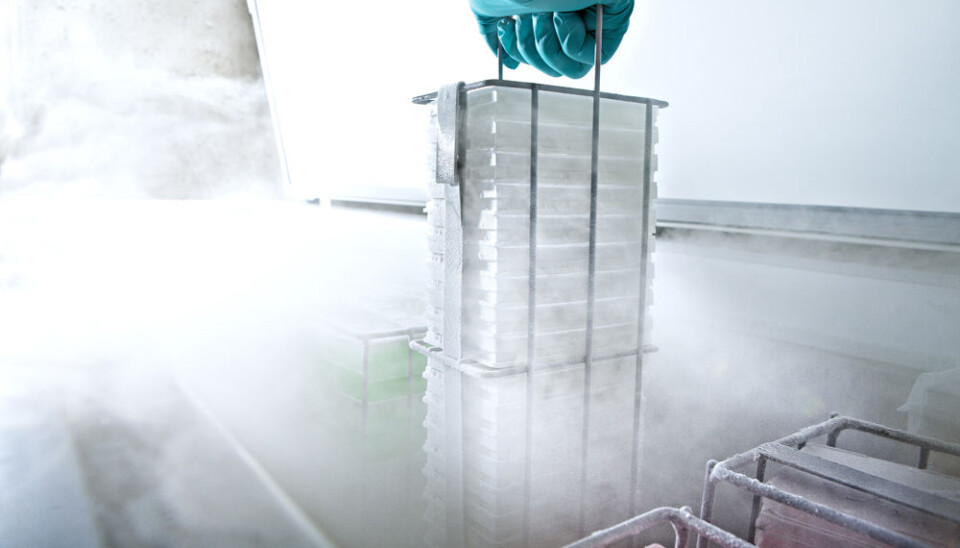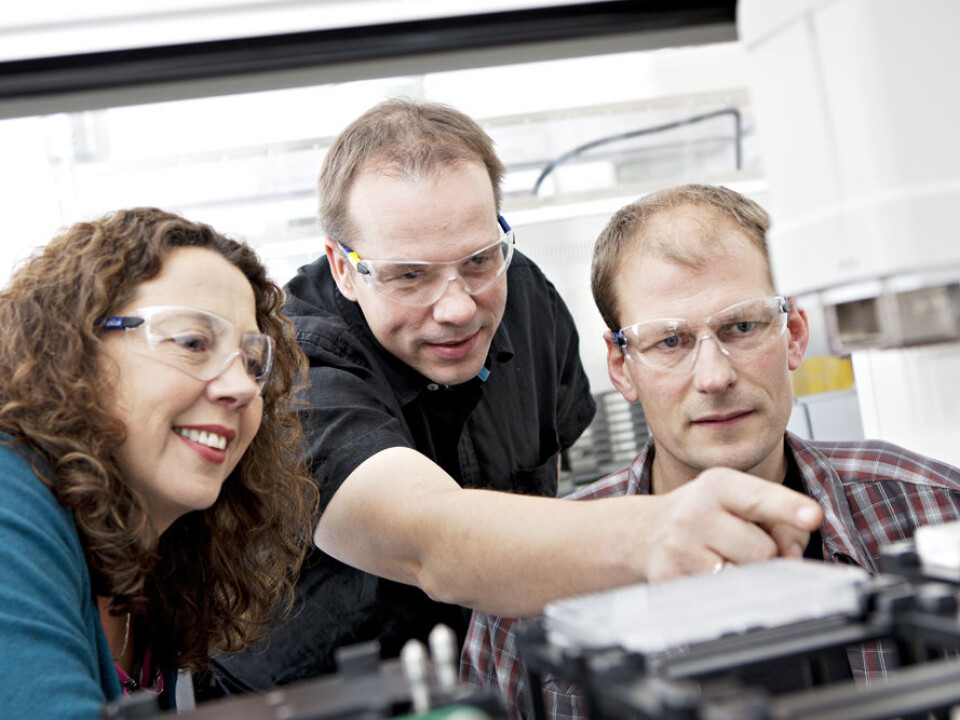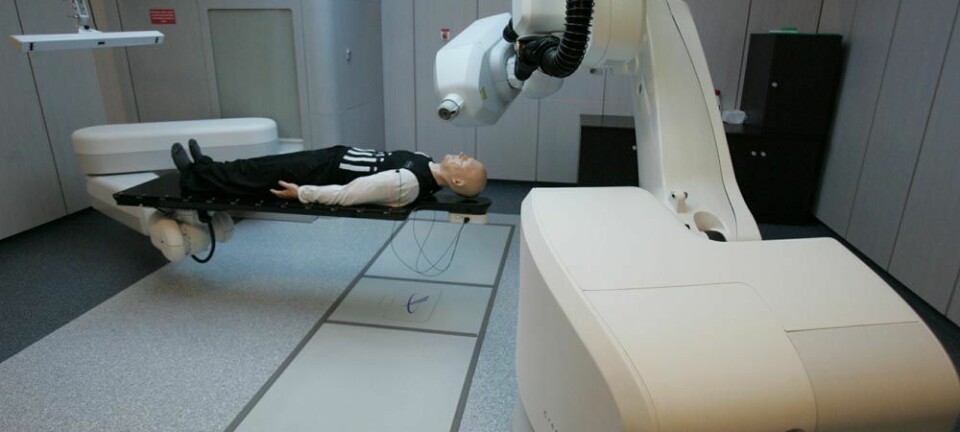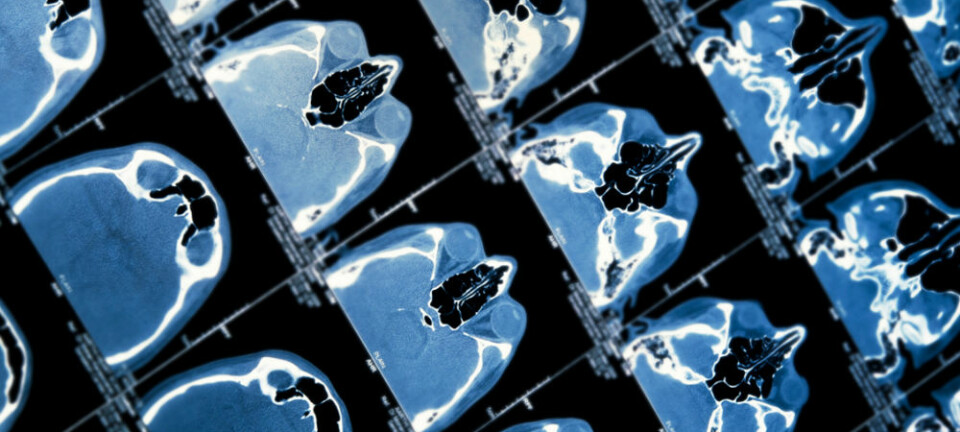An article from Norwegian SciTech News at NTNU

A most unusual cancer patient
One of humankind's genetic cousins is baker's yeast. That makes this humble yeast a perfect guinea pig for cancer research.
Denne artikkelen er over ti år gammel og kan inneholde utdatert informasjon.
Bergfrid the lab tech is pretty busy these days. She is responsible for giving thousands of young cancer patients their daily chemotherapy dose – and then she has to check how they react to the poison: Is it killing them?
But before you get too excited, you should know that Bergfrid is a robot and her "patients" are cells that have their origins in ordinary baking yeast. And strictly speaking, they do not have cancer, either.
But ... baker's yeast?
It's not as strange as it may sound.

"From a genetic perspective, humans and baker's yeast are actually cousins," says Marit Otterlei. She is a professor of molecular medicine at NTNU, and a cancer researcher in a team of world-class scientists.
Patients in hibernation
It's a Monday and we are in the basement of the Chemistry Department at the university. Here, hidden away under the hustle and bustle of the university's halls and auditoria are large freezers, humming with purpose and filled with things that only a scientist would want to freeze – bacteria from the ocean floor, cancer cells and who knows what else.
One freezer is opened and up comes what looks like a deep-frozen CD collection. Inside each cover is a disc, with hundreds of small holes. Inside the small holes are thousands of genetically modified baker's yeast cells, fast asleep. The yeast is regularly woken up out of hibernation with heat and a little sugar, and then used as models during extensive chemotherapy testing.
Four floors above this basement treasure trove is the tireless robot lab assistant Bergfrid. Her job is to drip microscopic amounts of chemotherapy into each tiny yeast-containing hole – and then to check what this does to the baker's yeast – two to three times per hour, 18 hours at a stretch.
The robot's efforts produce a flood of thousands of graphs detailing which yeast cells are dead, partially alive or as fresh as ever. It is in this information that researchers are searching for gold: tomorrow's cancer medicine.
Once upon a time...
To understand how yeast can serve as a guinea pig for cancer re¬search, we need to go back in history, almost to the dawn of time.
Our guide on this journey of the imagination is Per Bruheim. He is married to Marit Otterlei and is an associate professor of microbial biotechnology at NTNU. Håvard Sletta, a senior researcher at SINTEF Materials and Chemistry, rounds off the trio that is behind the effort to use baker's yeast in the fight against cancer.
Inside Bruheim's office, in one of his thick biology bibles, lies the answer to how it is that baker's yeast and humans are cousins.
"Let's find a phylogenetic tree," says Bruheim, and begins to leaf through the wafer-thin pages.
"Here," he says, pointing to something that resembles a family tree. "There is Luca."
Once, four billion years ago, there was in fact an ancestral cell named Luca. The name stands for the "Last Universal Common Ancestor." Later this ancestral cell split into two main branches. On one main branch the animal kingdom and fungus (yeast) are located on two lateral branches right next to each other. It is this common pre-history in the ancestral cell that makes 40 per cent of the genes in baker's yeast the same as those that are found in humans. These common genes are mainly those that regulate how yeast and humans copy and repair their own genetic material.
"That's the reason that research on baker's yeast is transferable to humans," said Bruheim, and why yeast has been used in molecular biology research for years.
Now libraries containing deletion mutants of all the genes in the yeast are available, and a new robotic screening laboratory at SINTEF makes it feasible to test and compare all these at once. Along with Professor Hans Krokan from NTNU's Faculty of Medicine, Bruheim, Otterlei and Sletta spent two years, approximately NOK 2 million and many unpaid Sunday afternoons to prove the value of transferring information from yeast research to humans.
Mutant Library
There is a great deal of experimental research can be done with baking yeast. One or more genes can be easily cut out or inserted. The yeast grows quickly, and can easily be frozen and resurrected again. All without anyone raising so much as a microscopic ethical eyebrow.
"Since yeast and humans share so many genes, we wanted to do chemotherapy research on yeast," says Bruheim.
The trio thus ordered a yeast library of 5500 mutant yeast types from Germany. A mutant means that there has been a genetic change in the yeast with respect to the original variety. There are 5500 genes in yeast, so a yeast library contains yeast where each gene has been switched off, one at a time, so that none of the 5500 mutants are alike.
"We are concentrating most on the approximately 2000 baker's yeast genes that are most similar to human genes. We then test the yeast library to find which mutants are more sensitive to chemotherapy than others," says Bruheim. "Next, we examine whether these genes also are important in drug sensitivity in human cells."
Researchers have found 225 mutants that are more sensitive to chemotherapeutic drugs than others, and many of these gene products may be potential drug targets. If their activity can be inhibited, that will improve the efficacy of chemotherapy.
Identifies genes
Both cancer cells and normal cells have a defence mechanism that enables the cell to repair damage to its genetic material (DNA). Chemotherapy directly or indirectly damages a cell's DNA so that the copying of DNA comes to a halt. If the cell is unable to copy all its DNA before dividing, the daughter cells die. Cancer cells divide more rapidly than other cells, and therefore have less time to repair any damage. Chemotherapy tries to exploit this characteristic of cancer cells to halt the spread of the disease.
Cancer patients often need to be exposed to large doses of chemotherapy, which damages or kills many normal cells in the process. The aim of the yeast project is to identify which genes are essential for cancer cells to repair themselves. If you can turn off the cell's ability to repair itself while giving a patient chemotherapy, the medicine will work better and you can use lower doses. Thus, the discomfort of chemotherapy will be less for patients.
Cancer medicine from the fjord?
Medical technology is one of NTNU's strategic research areas, and the scientists have now been granted two doctoral candidates and a postdoctoral position to aid in their research.
The next step is to test the yeast library as well as cancer cells for new medicines.
Håvard Sletta may already have some of these candidates in the freezer. Over the past few years, researchers from NTNU and SINTEF been out on the Trondheim Fjord in a boat, and picked up over twelve thousand bacteria. Among them are the types of bacteria that make substances that kill cancer cells.
As if cancer-killing bacterial extracts from the Trondheim Fjord are not enough – the scientists have even more cards up their sleeves. Marit Otterlei is the woman behind the company APIM Therapeutics, which has developed a new type of cancer treatment.
The treatment aims to reduce the ability of cancer cells to repair themselves.
Michael Ørum, who works for the international consulting firm Ventac Partners, which specializes in finding and developing biotechnology, health and medical startups, said recently to Dagens Næringsliv that Otterlei's research is world-class. She now has an investor who has put up millions to help with the commercial development of APIM Therapeutics.
The yeast research team is rounded off by NTNU professors Eivind Almaas (systems biology) and Finn Drabløs (bioinformatics). The researchers will now test more of the bacterial extracts from Trondheim Fjord on baker's yeast and cancer cells from humans, in combination with the APIM Therapeutics approach.
"We believe that the combination of all of this will be very interesting," predicts Otterlei.


































